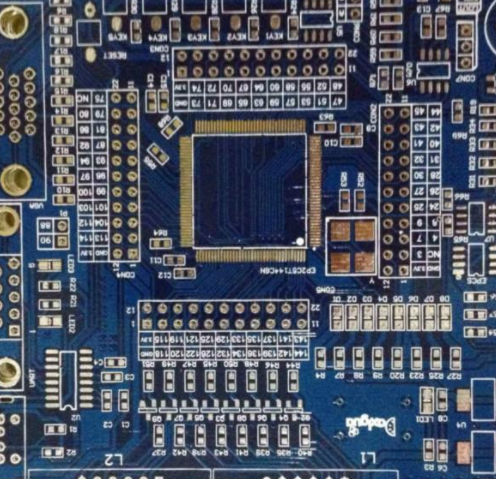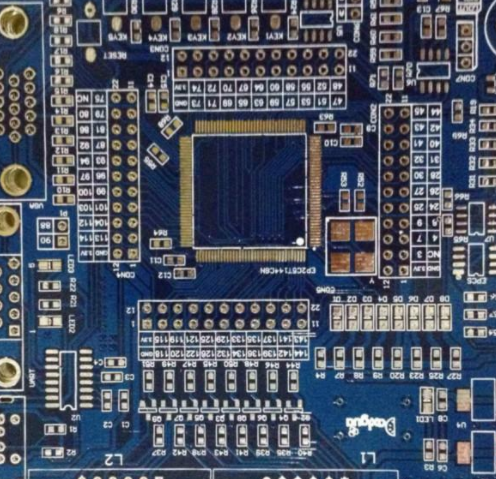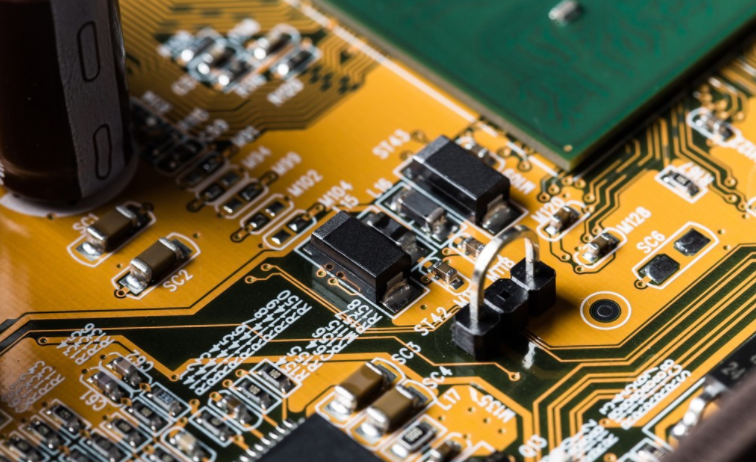
开云·kaiyun官方网站 exposure skills and basIC knowLEDge
First, exposure
Exposure means that when 开云·kaiyun官方网站 manufacturers process boards, under ultraviolet light irradiation, photoinitiators absorb light energy and decompose it into free radicals, which then lead luminous polymerization monomers to conduct polymerization and cross-linking reaction, and form a large molecular structure that is insoluble in dilute alkali solution after reaction. The exposure is generally carried out in the automatic double-sided exposure machine. Now the exposure machine can be divided into air cooling and water cooling according to the different cooling methods of the light source.
Factors affecting the quality of exposure imaging
In addition to the performance of dry film photoresist, the selection of light source, the control of exposure time (exposure amount), and the quality of photographic plate are all important factors affecting the quality of exposure imaging.

1) Selection of light source
Any kind of dry film has its own unique spectral absorption curve, and any kind of light source has its own EMIssion spectral curve. If the main peak of spectral absorption of a certain dry film overlaps or mostly overlaps with the main peak of spectral emission of a certain light source, the two are well matched and the exposure effect is good.
The spectral absorption curve of domestic dry film shows that the spectral absorption range is 310-440 nm (nm). From the spectral energy distribution of several light sources, it can be seen that the pickaxe lamp, high-pressure mercury lamp and iodine gallium lamp have relatively large relative radiation intensity in the wavelength range of 310-440nm, and are ideal light sources for dry film exposure. Xenon lamps are not suitable for exposure to dry film.
After the type of light source is selected, the light source with high power should also be considered. Because of the high light intensity, high resolution and short exposure time, the photographic plate is less deformed by heat. In addition, the design of lamps is also very important. It is necessary to make the incident light as uniform and parallel as possible to avoid or reduce the poor effect after exposure.
2) Control of exposure time (exposure)
In the process of exposure, the photopolymerization of dry film is not "initiated" or "completed in one exposure", but generally goes through three stages.
Due to the presence of oxygen or other harmful impurities in the dry film, an induction process is required. During this process, the free radicals generated from the decomposition of the initiator are consumed by oxygen and impurities, and the polymerization of monomers is very SMAll. However, once the induction period is over, the photopolymerization reaction of monomers will be carried out quickly, and the viscosity of the adhesive film will increase rapidly, close to the degree of mutation. This is the stage of rapid consumption of photosensitive monomers, which accounts for a small proportion of time in the exposure process. When most of the photosensitive monomers are consumed, they enter the monomer depletion zone, and the photopolymerization reaction has been completed.
The correct control of exposure time is a very important factor for obtaining excellent dry film corrosion resistant images. When the exposure is insufficient, due to the incomplete polymerization of monomers, during the development process, the adhesive film swells and becomes soft, the lines are not clear, the color is dim, or even degummed. During the pretreatment or electroplating process, the film is warped, infiltrated, or even peeled off. When the exposure is too high, it will cause problems such as difficult to develop, brittle film, and residual glue. More seriously, incorrect exposure will result in deviation of image line width. Excessive exposure will make the lines of graphic electroplating thinner and the lines of printed etching thicker. On the contrary, insufficient exposure will make the lines of graphic electroplating thicker and the lines of printed etching thinner.
How to determine the exposure time correctly?
Due to the different exposure machines used by various manufacturers of films, namely, different light sources, lamp power and lamp spacing, it is difficult for dry film manufacturers to recommend a fixed exposure time. Foreign companies producing dry films have their own or recommended optical densitometers. When dry films leave the factory, they MARK the recommended imaging stages. Chinese dry film manufacturers do not have their own optical densitometers, and generally recommend using Reston Ziston Grade 17 or Stouffer Grade 21 optical densitometers.
The optical density of Reston 17 optical densitometer grade is 0.5, and the optical density difference of each grade after that is 0.05, and the optical density of the 17th grade is 1.30. The optical density of Stuffy 2l optical densitometer is 0.05, and the optical density difference △ D of each subsequent level is 0.15, and the optical density of the 2l optical densitometer is 3.05. When exposed with an optical densitometer, if the optical density is small (i.e. more transparent), the dry film receives more UV light energy and is more fully polymerized, while if the optical density is large (i.e. less transparent), the dry film receives less UV light energy and does not polymerize or polymerize incompletely, and is displayed or only left a part during development. In this way, different imaging stages can be obtained by exposure at different times.
The use method of Reston 17 optical densitometer is introduced as follows:
a. The film is downward during exposure;
b. Put the film on the copper clad foil for 15 minutes before exposure;
3) Quality of photographic plate
The quality of photographic plate is mainly shown in optical density and dimensional stability.
For optical density, it is required that the optical density Dmax is greater than 4 and the minimum optical density Dmin is less than 0.2. Optical density refers to the lower limit of light blocking of the surface light blocking film in the left UV light of the substrate. That is, when the light blocking density Dmax of the opaque area of the substrate exceeds 4, good light blocking can be achieved. The minimum optical density refers to the upper limit of light blocking presented by the transparent film base outside the light blocking film of the substrate in the ultraviolet light. That is, when the optical density Dmin of the transparent area of the substrate is less than 0.2, good light transmission can be achieved. The dimensional stability of the photographic plate (referring to the change with temperature, humidity and storage time) will directly affect the dimensional accuracy and image coincidence of the printed board. The serious expansion or reduction of the photographic plate size will cause the deviation of the photographic plate image from the drilling hole of the printed board. The size of the original domestic SO hard film varies greatly due to the influence of temperature and humidity, and its temperature coefficient and humidity coefficient are about (50-60) × 10-6 / ℃ and (50-60) × 10-6/%. For a piece of S0 plate with a length of about 400 mm, the size change in winter and summer can reach 0.5-1 mm. When imaging on the printed board, the distance from half a hole to one hole may be deviated. Therefore, the production, use and storage of photographic plates are all in a constant temperature and humidity environment.
The dimensional stability of photographic plates can be improved by using thick polyester based silver salt plates (such as 0.18mm) and diazo plates. In addition to the above three main factors, the vacuum system of the exposure machine and the selection of vacuum frame materials will also affect the quality of exposure imaging.
Exposure positioning
1) Visual positioning
Visual positioning is usually applicable to the use of diazo substrate, which is brown or orange translucent; But it is impervious to ultraviolet light. The bonding pad of the substrate is aligned with the hole of the printed board through the diazo image, and it can be exposed after being fixed with tape.
2) Positioning of release positioning system
The release positioning system includes a photographic film punch and a double round hole release. The positioning method is as follows: first, align the front and back two bottom plate drug films under the microscope; Use a film punch to punch two locating holes outside the effective image of the two aligned plates, and take one plate of the plates with the locating holes punched to program the drilling. Then you can get a data tape that SIMultaneously drills the element holes and locating holes. Drill the element holes and locating holes at one time. After the metallization holes and pre copper plating of the printed board, you can use the double round holes to release the pins for positioning and exposure.
3) Fixing pin positioning
This fixing pin is divided into two systems, one for fixing the photographic plate and the other for fixing the printed board. By adjusting the position of the two pins, the photographic plate and the printed board can be aligned. After exposure, the polymerization reaction will continue for a period of time. To ensure the stability of the process, do not remove the polyester film immediately after exposure, so that the polymerization reaction can continue. Remove the polyester film before developing.
The above is the explanation given by the editor of 开云·kaiyun官方网站 circuit board company. If you want to know more about 开云·kaiyun官方网站A, you can go to our company's home page to learn about it. In addition, our company also sells various circuit boards,
High Frequency Circuit Board and SMT chip are waiting for your presence again.
然后
联系
电话热线
13410863085Q Q

微信

- 邮箱











